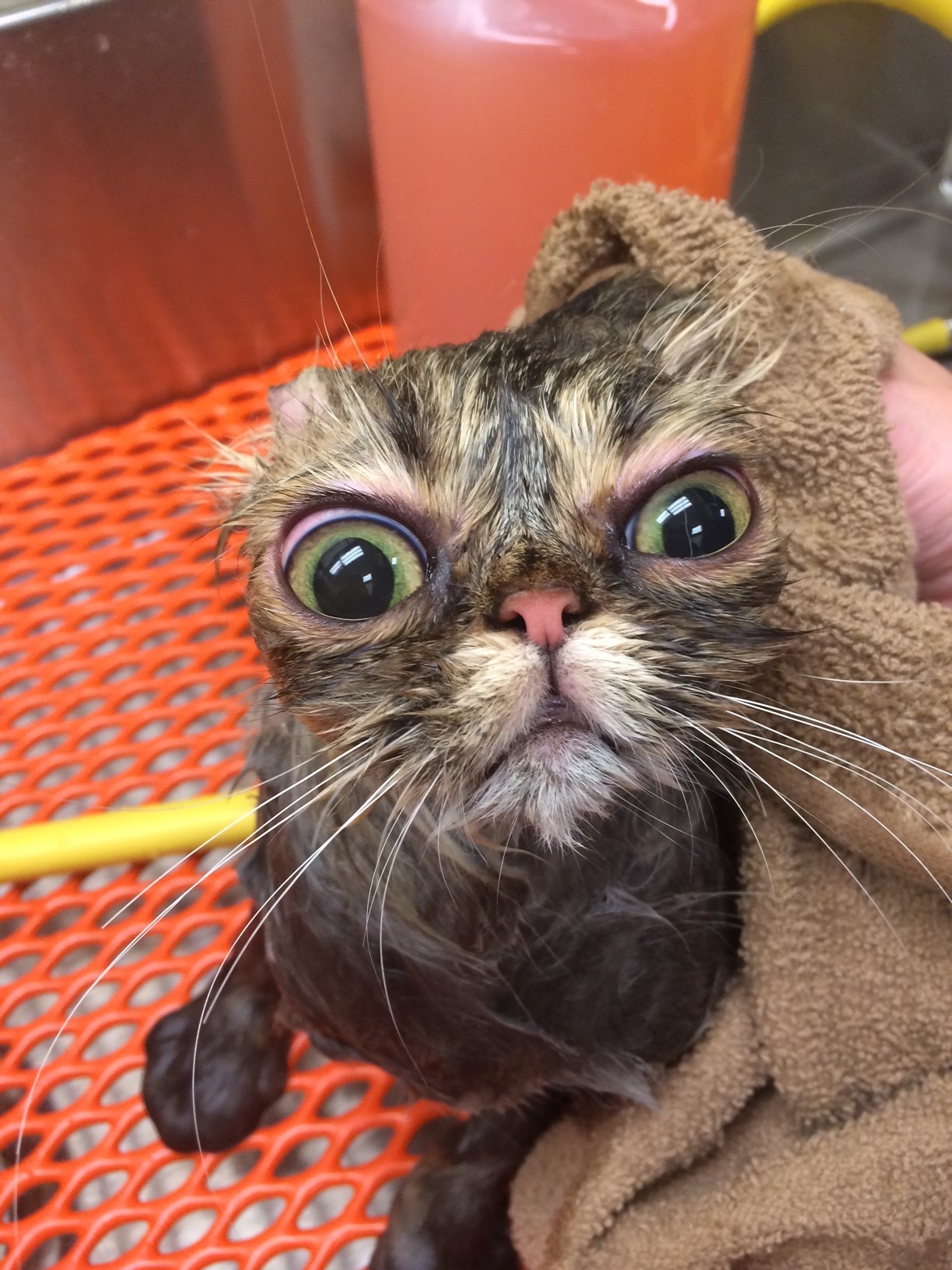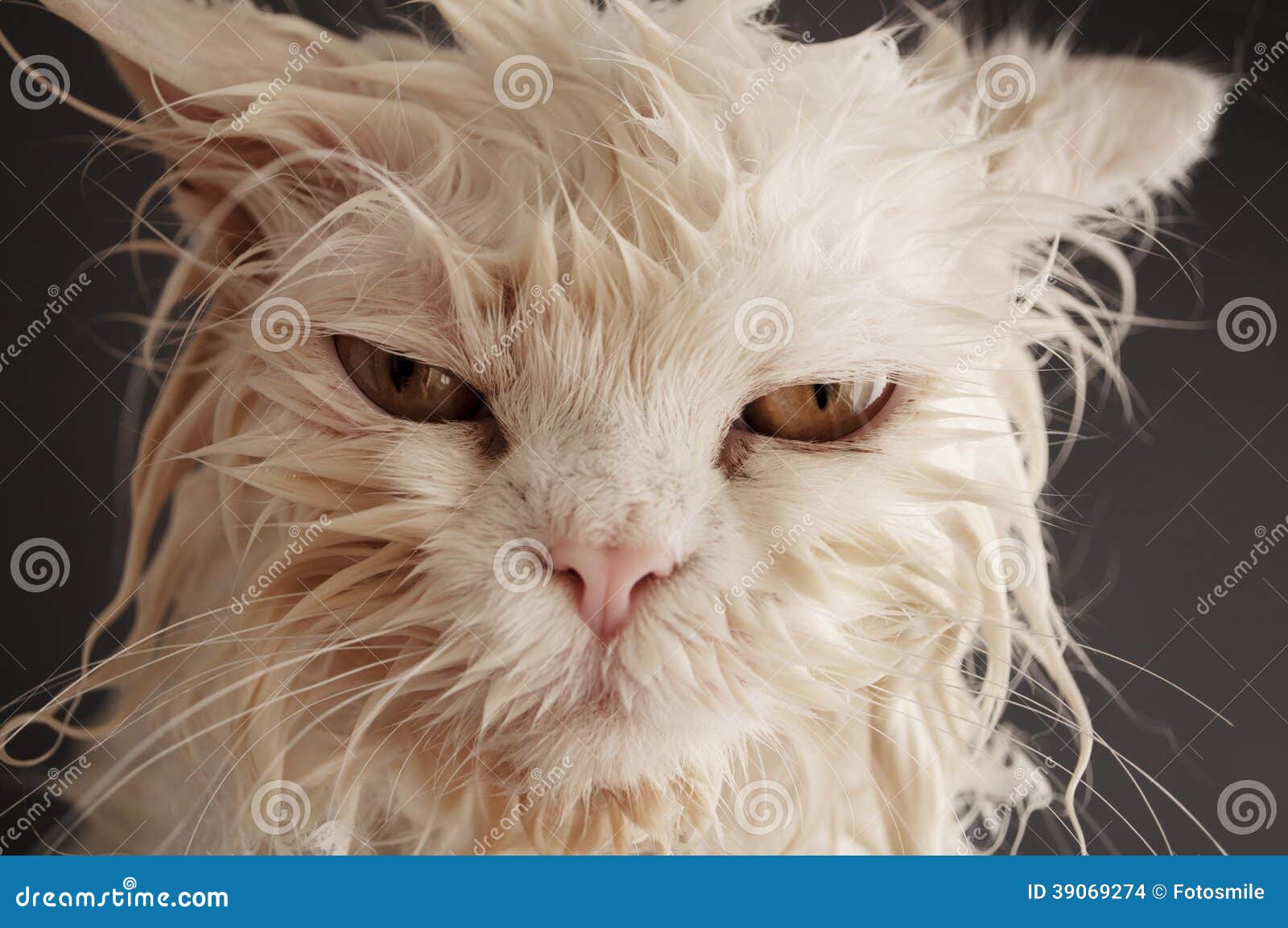What Does Wet Cat Meaning Unveil? A Comprehensive Guide For Cat Lovers
Ever wondered what "wet cat meaning" truly signifies? Well, buckle up, because we're about to dive into the fascinating world of feline expressions and behaviors. If you’ve ever seen your cat looking like they just got caught in a rainstorm (even when it’s bone-dry indoors), you’re not alone. This quirky phenomenon has sparked curiosity among pet parents worldwide. So, let’s break it down and uncover the mystery behind this peculiar behavior.
Now, before we get into the nitty-gritty, let’s address the elephant—or should we say, the soggy feline—in the room. Cats are notoriously clean creatures, so why would they act like they’ve been soaked? The answer lies in their body language and the subtle cues they give us. Understanding these signs can strengthen the bond between you and your furry friend, ensuring they feel safe and understood.
As we explore the wet cat meaning, we’ll also touch on how it relates to your cat's health, mood, and overall well-being. Whether you’re a seasoned cat parent or just starting out, this guide will equip you with all the knowledge you need to decode your cat’s unique quirks. So, let’s get started!
- Die Dunkle Seite Unzensierte Inhalte Fluch Oder Segen
- Achtung Stierfrau Die Wahrheit Erschreckende Fakten Ber Sie
Table of Contents:
- Biography of a Curious Cat
- The Wet Cat Phenomenon
- Behavioral Signals Behind the Wet Look
- Health Concerns Related to Wet Cat Meaning
- Environmental Factors That Trigger the Wet Look
- Cats and Water: A Love-Hate Relationship
- Tips for Understanding Your Cat’s Wet Behavior
- Common Myths About Wet Cats
- Expert Advice on Cat Behavior
- Conclusion: Decoding Your Cat’s Wet Signal
Biography of a Curious Cat
Let’s take a moment to understand our feline friends better. Cats, with their mysterious demeanor and independent nature, have been fascinating humans for centuries. From ancient Egypt, where they were worshipped as deities, to modern-day households where they reign supreme, cats have always held a special place in our hearts.
Key Characteristics of Cats
Here’s a quick rundown of what makes cats so unique:
- Movierulz Alles Was Sie Wissen Mssen Alternativen Im Berblick
- Achtung Movierulz Gefahren Amp Alternativen Fr Filmfans
- Independent: Cats love their alone time and often prefer to explore the world on their own terms.
- Curious: Ever heard the saying "curiosity killed the cat"? Well, it’s not far from the truth. Cats are naturally inquisitive and love to investigate their surroundings.
- Fastidious: Cats are cleanliness personified. They spend a significant amount of time grooming themselves, ensuring they’re always looking their best.
Now, let’s get to the heart of the matter—what does it mean when your cat looks like a drowned rat? Stick around, because the answers might surprise you!
The Wet Cat Phenomenon
Picture this: you walk into your living room, and there’s your cat, lying on the couch, looking like they’ve just emerged from a bath. But wait, there’s no water in sight. What gives? This is what we call the "wet cat phenomenon," and it’s more common than you think.
So, why do cats exhibit this behavior? Well, it could be due to a variety of reasons, ranging from physical discomfort to emotional distress. Understanding the context in which your cat displays this behavior is key to deciphering its meaning.
Common Triggers for the Wet Look
Here are some of the most common triggers:
- Stress: Cats can become stressed by changes in their environment, such as new furniture or a new pet in the house.
- Illness: Sometimes, a wet appearance can be a sign of an underlying health issue, like skin irritation or parasites.
- Grooming Habits: Cats groom themselves frequently, and sometimes this can lead to a damp-looking coat.
By observing your cat’s behavior closely, you can start piecing together the puzzle of the wet cat meaning.
Behavioral Signals Behind the Wet Look
Cats are masters of non-verbal communication, and their body language can tell you a lot about how they’re feeling. When your cat looks wet, it’s often a sign that something’s up. Let’s break down some of the behavioral signals to watch out for:
1. Flattened Ears: If your cat’s ears are flattened against their head, it could indicate fear or anxiety.
2. Tail Position: A tucked tail or one that’s puffed up can signal discomfort or aggression.
3. Vocalization: Pay attention to any unusual sounds your cat might be making, like excessive meowing or growling.
These subtle cues can provide valuable insights into your cat’s emotional state, helping you better understand the wet cat meaning.
Health Concerns Related to Wet Cat Meaning
While the wet cat phenomenon is often harmless, it can sometimes be a sign of an underlying health issue. As a responsible pet parent, it’s important to be aware of the potential red flags:
Common Health Issues to Watch For
Here are a few health concerns that could be linked to the wet cat meaning:
- Fleas or Mites: These pesky parasites can cause skin irritation, leading to a damp-looking coat.
- Allergies: Cats can suffer from allergies, which might manifest as excessive grooming or a wet appearance.
- Thyroid Problems: Hyperthyroidism can cause changes in a cat’s coat, making it look greasy or wet.
If you notice any of these symptoms, it’s best to consult your veterinarian for a proper diagnosis and treatment plan.
Environmental Factors That Trigger the Wet Look
Our furry friends are highly sensitive to their surroundings, and changes in the environment can trigger a variety of behaviors, including the wet cat look. Here are some environmental factors to consider:
1. Humidity Levels: High humidity can make a cat’s coat feel damp, even if they haven’t been near water.
2. Seasonal Changes: Cats can react differently to changes in weather, such as colder temperatures or rain.
3. Household Changes: Moving furniture, introducing new pets, or even rearranging the living room can stress out your cat.
By maintaining a stable and comfortable environment, you can help minimize the occurrence of the wet cat phenomenon.
Cats and Water: A Love-Hate Relationship
Let’s face it—cats and water don’t always mix. Most cats avoid water at all costs, but there are exceptions. Some breeds, like the Turkish Van, actually enjoy swimming. However, for the majority of cats, water is a big no-no.
So, why do some cats act like they’ve been drenched, even when they haven’t come into contact with water? It could be due to their grooming habits or a reaction to environmental factors. Understanding your cat’s relationship with water can help you better interpret the wet cat meaning.
Tips for Understanding Your Cat’s Wet Behavior
Now that we’ve covered the basics, here are some practical tips for decoding your cat’s wet behavior:
1. Observe Closely: Pay attention to your cat’s body language and any changes in their routine.
2. Keep a Journal: Document instances of the wet cat phenomenon, noting any potential triggers.
3. Consult Your Vet: If you’re concerned about your cat’s health, don’t hesitate to seek professional advice.
By taking a proactive approach, you can ensure your cat stays happy and healthy.
Common Myths About Wet Cats
There are plenty of myths surrounding cats and water, and it’s important to separate fact from fiction. Here are a few common myths debunked:
Myth 1: All cats hate water. While most cats avoid water, some actually enjoy it.
Myth 2: A wet cat is always sick. Not necessarily—sometimes it’s just a grooming habit or environmental factor.
Myth 3: Cats don’t need baths. While cats are excellent groomers, there are times when a bath might be necessary.
Arming yourself with the right information can help you better understand your cat’s behavior.
Expert Advice on Cat Behavior
When it comes to understanding cat behavior, it’s always a good idea to consult the experts. Veterinarians and animal behaviorists can provide valuable insights into the wet cat meaning and offer tailored advice for your furry friend.
For example, Dr. Jane Goodall, a renowned primatologist and animal behavior expert, emphasizes the importance of observing animals in their natural habitat to gain a deeper understanding of their behavior. While her work focuses on primates, the principles apply to our feline companions as well.
Conclusion: Decoding Your Cat’s Wet Signal
In conclusion, the wet cat meaning is a complex and multifaceted phenomenon that can be influenced by a variety of factors. By paying attention to your cat’s behavior, maintaining a stable environment, and seeking professional advice when needed, you can ensure your cat remains happy and healthy.
So, the next time you see your cat looking like they’ve been caught in a rainstorm, take a moment to observe and understand. Who knows? You might just uncover a new layer of your cat’s personality.
Don’t forget to share your thoughts and experiences in the comments below. And if you found this article helpful, feel free to share it with fellow cat lovers. Together, let’s decode the mysteries of our feline friends!
- Filmwelt Entdecken Deine Topquellen Fr Kino Streaming Co
- Girthmasterr Was Steckt Wirklich Dahinter Enthllung

The 26 funniest wet cats pictures of all time

The 26 funniest wet cats pictures of all time

Wet cat stock photo. Image of adorable, white, kitty 39069274